World 🢖 Asia 🢖 India 🢖 Madhya Pradesh
Prehistoric cave and rock paintings 🢔 Petroglyphs and rock art 🢔 Archaeological wonders 🢔 Categories of wonders
Wonder
Bhimbetka cave shelters
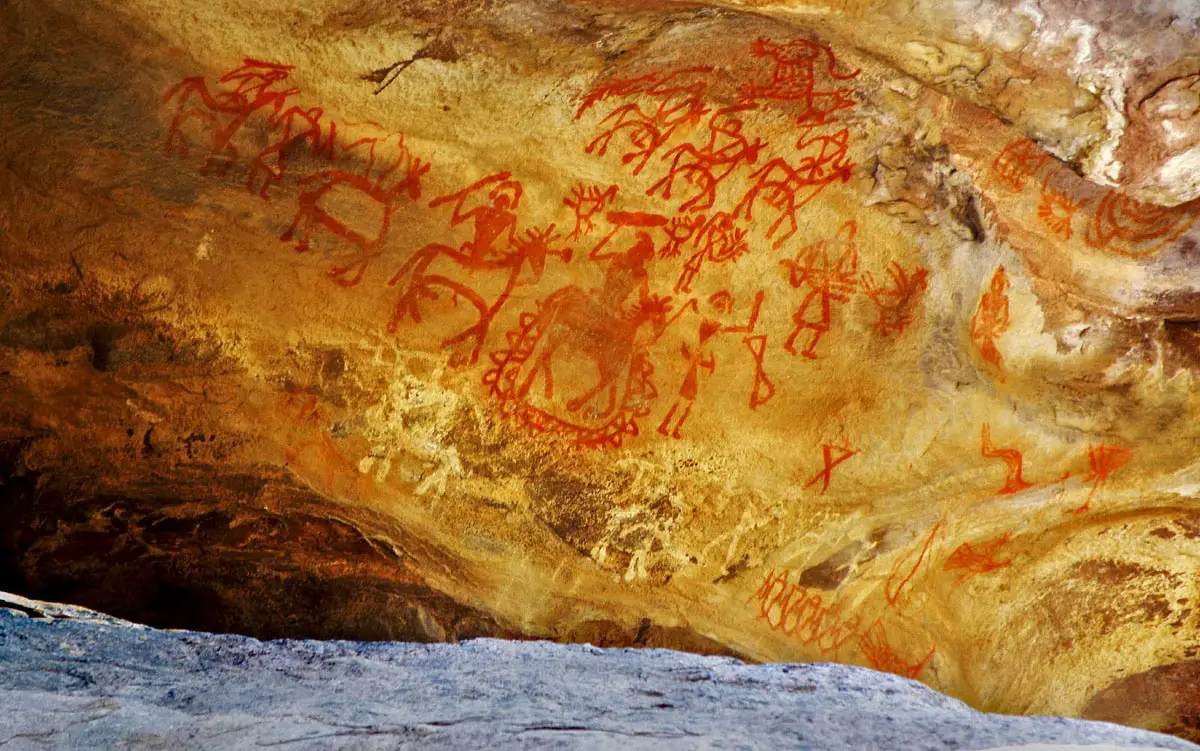
 In short
In short
It is amazing and even hard to grasp – Bhimbetka Caves have recorded the human history over some 300,000 years – or may be even 700,000 and more years!
 48.4%
48.4%
GPS coordinates
Location, address
Writing in Devanagari
Age
UNESCO World Heritage status
Map of the site
If you see this after your page is loaded completely, leafletJS files are missing.
 In detail
In detail
These caves contain the oldest known petroglyphs in the world, some of the most impressive galleries of ancient paintings and even the remnants of Buddhist temples and paintings from the 11th – 14th century AD.
Art here is found in hundreds of caves and some 12 – 15 of these caves are open for visitors. In spite of the unique values of Bhimbetka, this site is not that popular among tourists yet.
Discovery of the most ancient Indian art
In 1957 Indian archaeologist Dr. Vishnu Wakankar noticed a very impressive landscape from the window of a train south from Obaidullaganj. There were visible giant rocks and boulders and dark entrances in caves.
Back then these hills were deserted and inhabited by a few Gonds – tribal people. Gonds considered that caves in hills were created by the witches.
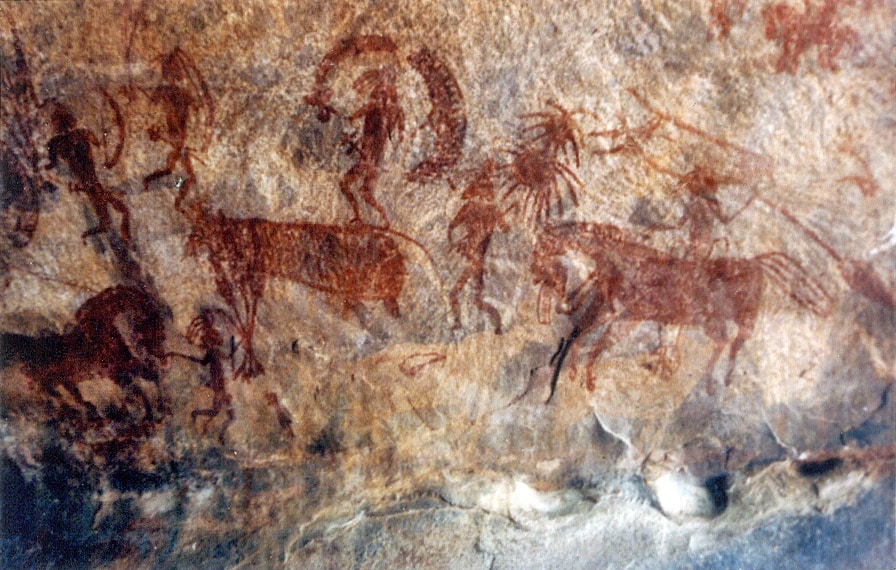
General people did not attach much importance to these small caves – after all, India is full of amazing monuments. But Mr. Wakankar had seen a similar landscape in Italy and France and supposed that this looks like a suitable place where to look for artifacts left by ancient people.
Next year he returned here with students. Their quest was more than successful. Shelters contained not just stone artifacts from the prehistoric age but a lot more: the walls and ceilings of caves were covered with paintings.
Wakankar and his students copied the drawings accurately and presented them at international conferences in France and the United States. The real value of this discovery though was realized later, in the 1970s when more scientists visited Bhimbetka.
Description of area
The largest Indian gallery of prehistoric art is spread over a wide, roughly 40 km² large area. Thus far there have been found some 760 caves on seven hills and more than 500 of these caves contain paintings and other artwork. The largest number of caves is on Bhimbetka Hill – 243 caves and Lakha Juar – 178 caves.
In a wider area around Bhimbetka there are known more than 1,700 rock shelters. 2 kilometers south-east from Bhimbetka, 1 km east from Bhianpur there is another group of caves with ancient paintings – Chhoti Jamun Jhiri.
Some caves are very small but others can be large enough to take hundreds of people.
Caves have formed in quartzite rock in the northern fringes of Vindhyachal ranges. This hilly area contains numerous low cliffs and many cliffs have very unusual forms. The landscape is characterized by enormous boulders of unusual form, often balancing on slopes. These stunning features have been created by the weathering of exposed rocks. Thus this area represents much interest for geomorphologists as well.
The hilly area is covered with primeval vegetation – mainly forest of teak and sal – and is characterized by high biodiversity.
Ancient shelters
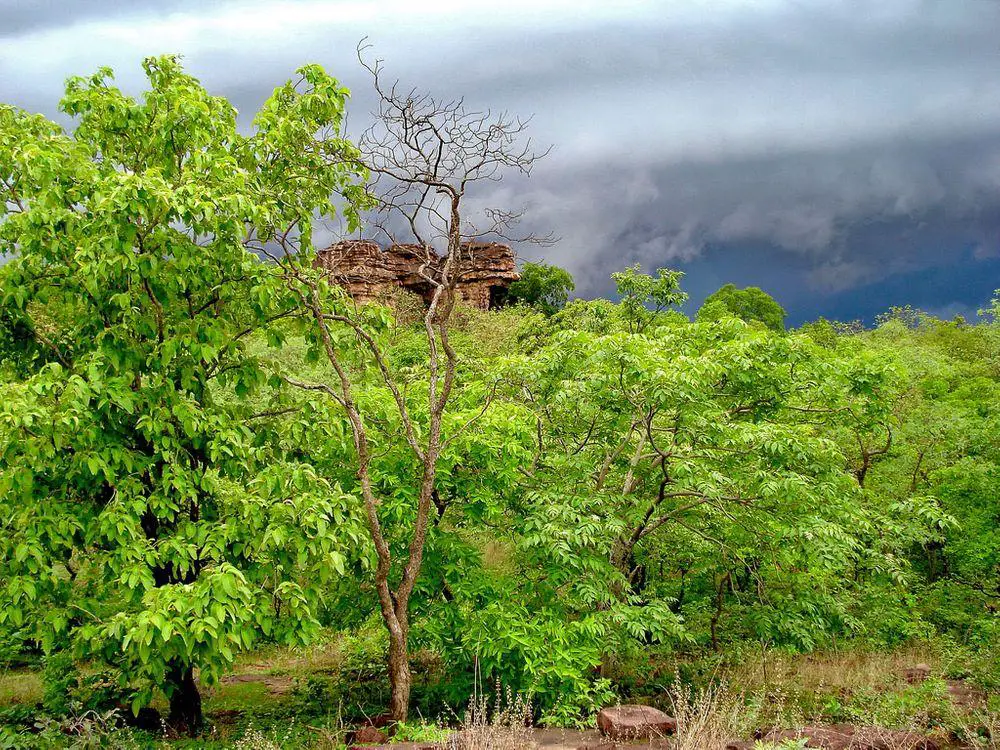
Research shows that Bhimbetka caves could be the oldest exhibit of human life in India – possibly people were living here more than 700,000 years ago.
Wider archeological excavations in caves started in 1971 and during the research, there was discovered that caves contain well-stratified sequences of the Lower Paleolithic period with stone tools. Stone tools show the evolution of man – the oldest tools are nearly unworked but over time they become more exact and more varied and specific.
Many of the Bhimbetka caves served as shelters for people and this site might belong to the longest continuously inhabited human settlements of the world. Deposits on the floor of these shelters represent continuous sequence throughout the Stone Age cultures – from Acheulian to Mesolithic.
Over time people learned to enjoy life turning these caves into comfortable (for its time) shelters. Bhimbetka contains the world’s oldest known walls and floors.
Some of the most ancient petroglyphs in the world

There is little doubt – an exploration of these caves will provide exciting discoveries for many years to come. One such unexpected discovery was made in a large cave called Auditorium Cave.
Auditorium Cave is a large, some 25 m long horizontal cave. At the far end of the entrance gallery, it widens into a larger room with three passageways diverting from it. In the center of this hall, there stands an enormous boulder – “Chiefs Rock”, 2.5 m high and 3.4 m wide, its volume is approx. 9 m3.
Cave was well known but it hid an unexpected surprise. In 1990 here, on Chief’s Rock, were discovered 9 cupules – simple, round hemispheric cavities with traces of red pigment. They looked very old but it seemed nearly impossible to find their true age.
Next year, in 1991 there was made an important discovery – the tenth cupule with a meandering line next to it. These petroglyphs were covered by deposits from the Acheulian period and later periods. Now the age could be determined – these petroglyphs were made at least 290,000 years ago. Later research by other dating methods (micro-erosion analysis) gave even more incredible results – it might be that these cupules were made 700,000 years ago!
Petroglyphs of similar age have been found in another cave of Madhya Pradesh – Daraki-Chattan. Outside Madhya Pradesh though there are not known petroglyphs of comparable age.
Paintings
The oldest paintings here are up to 12,000 – 15,000 years old – although there are sources that state that drawings are even 30,000 years old and thus might be some of the oldest in the world. Many of the drawings of Bhimbetka represent also quite high artistic standards.
Although there are more than 500 caves with artwork, the number of drawings in separate caves is varying. Some caves contain just a few faint paintings but some have many layers of drawings on walls and ceilings. The ceiling in some enormous caves is quite high – but still covered with exquisite drawings.
Technique
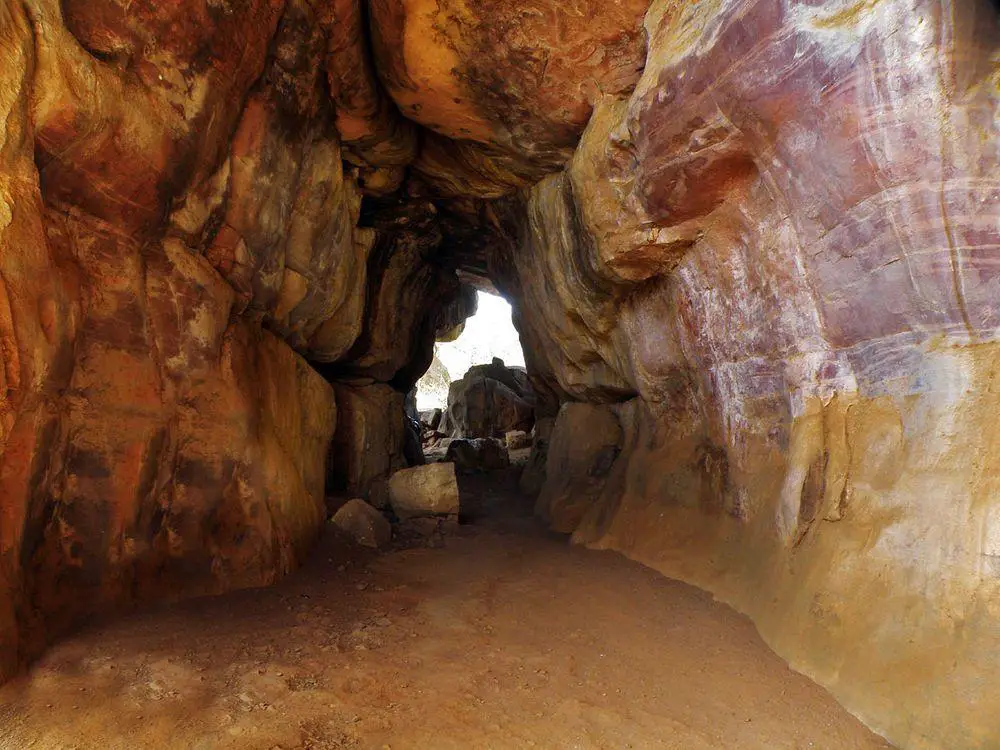
Artists in Bhimbetka used a white and red color of different shades, occasionally also green, yellow, and orange.
These colors were prepared by combining manganese, hematite, wooden coal, soft red stone, plant leaves. Sometimes animal fat and extracts of leaves were used as well.
Brushes were made of the fiber of plants.
Colors have survived thousands of years – mainly thanks to the use of natural pigments and also thanks to coincidence where the natural chemical processes of the rock surface continued to sustain some colors. Those drawings which are deeper inside the caves, away from the rain and Sun, have survived better.
Themes
The art of Bhimbetka is characterized by inventive design and touch – throughout countless generations, there have been expressing many people with enviable skills in drawing and skillful handling of colors.
Paintings in Bhimbetka provide much information about the lives of prehistoric people from their birth to death. These drawings include the scenes of festivities, religious rites, daily work, and hunting. Scenes show also fights of animals, collection of honey, body decoration. Among the animals are shown bison, tigers, lions, wild boar, elephants with tusks, antelopes, dogs, lizards, crocodiles, peacocks, snakes, and others.
In total there have been counted 817 drawings of humans, 779 of these are adult men. Out of 428 animals, 185 are horses.
One well-known drawing shows a hunter in trouble – it depicts oversized bison in pursuit of one hunter, two other people stand by helpless.
Some of the best paintings are located on the site called Zoo Rock. It contains paintings from 10,000 BC – made by lime and from 5,000 – 3,000 BC – made by vegetable colors and iron. These drawings show diverse animals, warriors riding on horses and elephants. All warriors are armed with swords and shields, bows, arrows, spears, daggers.
Periodisation of Bhimbetka paintings
The extreme diversity of paintings in Bhimbetka has been created over many thousands of years. In many cases, newer artwork has been laid over the older one. This and some more methods allow classifying paintings according to their age and style.
The general tendency of Bhimbetka art is the following – initially, figures in drawings were larger, later they became smaller and more elaborate. In the initial period there is more attention to scenes of everyday life, later there appear more and more religious motives. Initially, just an outline of an animal or person was drawn, in later periods this outline was filled with color and details.
In Bhimbetka we can follow the changes in the psychological and sociological mindset of people throughout many thousands of years.
There are several systems for periodization of Bhimbetka paintings. Here is given periodization of Bhimbetka cave art by Yashodar Mathpal, 1998:<.p>
Prehistoric art
- Phase 1 Drawn large sized animals – buffaloes, elephants, wild bovids, big cats. Used rough outlines, partly infilled with geometric patterns. Humans are not shown.
- Phase 2 Small figures of animals and people, shown with great skill – naturalistic and lively. A popular motif is hunters in groups, one of the most popular animals – deer. Used red, white, emerald green colors, where the green color is used for dancing people with S-shaped body.
- Phase 3 Large sized animals with vertical stripes, people.
- Phase 4 Stylised, schematic figures.
- Phase 5 Stylised, decorative style. Animals with oversized horns, drawn with fine, thin lines. Honey-comb, zigzag and concentric body decoration.
Transitional period
Characterises the beginning of agriculture in this area.
- Phase 6 Differs very much from the prehistoric art, used schematic style. Thus, for example, animals are shown as boxes with stiff legs. Depicted chariots and carts with yoked oxen.
Historical art
- Phase 7 Riders on horses and elephants, group dancers. Used thick red and white colors. In general the style shows decline in local art.
- Phase 8 Depiction of military life – marching soldiers with their chiefs on elephants or horses. Horses are elaborately decorated. Used white color for fill in and red – for outlines.
- Phase 9 Medieval art up to the 11th – 14th century AD. Geometric human figures, designs. Used known contemporary symbols. Inscriptions. Mostly dark green drawings, occasional pale yellow, dark purple and red color was used. These crude drawings show degeneration of local art style. Here appear also drawings of Ganesh and Nataraja.
Remnants of historical time
The name – Bhimbetka – may originate from Bhima-baithka – “seat of Bhima”. Thus the name of caves is related to the famous Pandava brothers from Mahabharata – Bhima is one of the Pandava brothers. This is the only link to the Hindu religion though, in medieval times Bhimbetka was a citadel of Buddhists.
Near Bhimbetka, at Bineka, there has been found a Buddhist monastic complex in ruins. Buddhist monks were living also in some of the prehistoric shelters – there are platforms and pavements made by them. There are also small Buddhist stupas, rock-cut beds for Buddhist monks.
An important part of the heritage in Bhimbetka is also ancient inscriptions dating back to Sunga, Kushan, Gupta periods. Here are also scripts in undeciphered Shankha script.
Buddhist monks have left also drawings, but these are not the latest paintings here: later there were added drawings of hunting scenes.
References
- Bhimbetka (India) description was provided for the Advisory Body of UNESCO World Heritage Committee. Accessed in 19 May 2010.
- Bhimbetka Caves by Chilli breeze, Smitha Tripathi. Accessed in 18 May 2010.
- Indian Archaeology, 1981 – 82 – a review, New Delhi, 1982.
- World Heritage Sites – Rock Shelters of Bhimbetka, Archaeological Survey of India. Last accessed in 19 May 2010, now page not available.
- Bhimbetka – an architectural treasure trove, India.Site. Last accessed in 19 May 2010, now not active.
- Bhimbetka petroglyphs, Encyclopedia of Irish and World Art. Accessed in 19 May 2010.
- Bhimbetka, Auditorium Cave, Madhya Pradesh: Acheulian Petroglyph Site, c. 200,000 – 500,000 BP, OriginsNet. Accessed in 19 May 2010.
Bhimbetka rock shelters are included in the following list:
 Linked articles
Linked articles
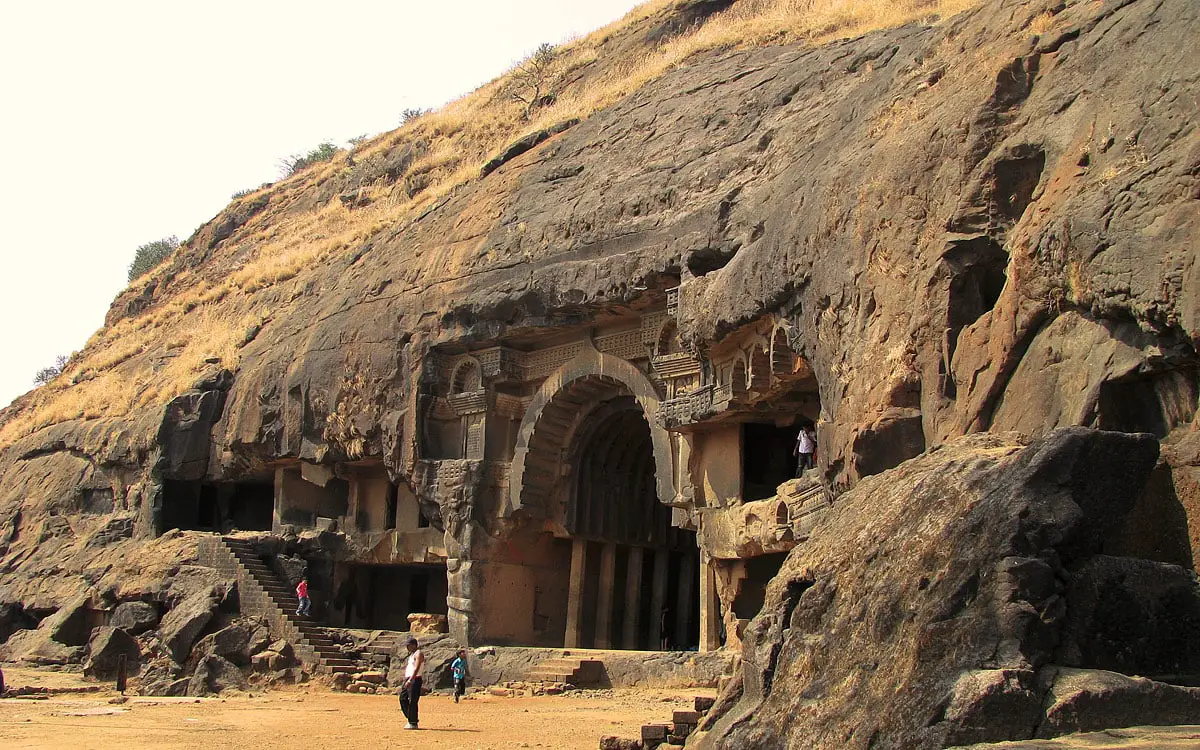
Rock-cut architecture and sculptures
Rock-cut architecture is a very ancient form of architecture – the oldest structures are more than 5 thousand years old. The resistivity of the natural stone and the constant climate inside these structures has preserved many art values around the world.

Wonders of India
India is the seventh-largest country in the world by area, and, naturally, such a large area contains a huge amount of exciting attractions…
Wondermondo considers that India is the second richest center of architectural heritage in the world after Europe and maybe no single country in the world can match it in this respect.
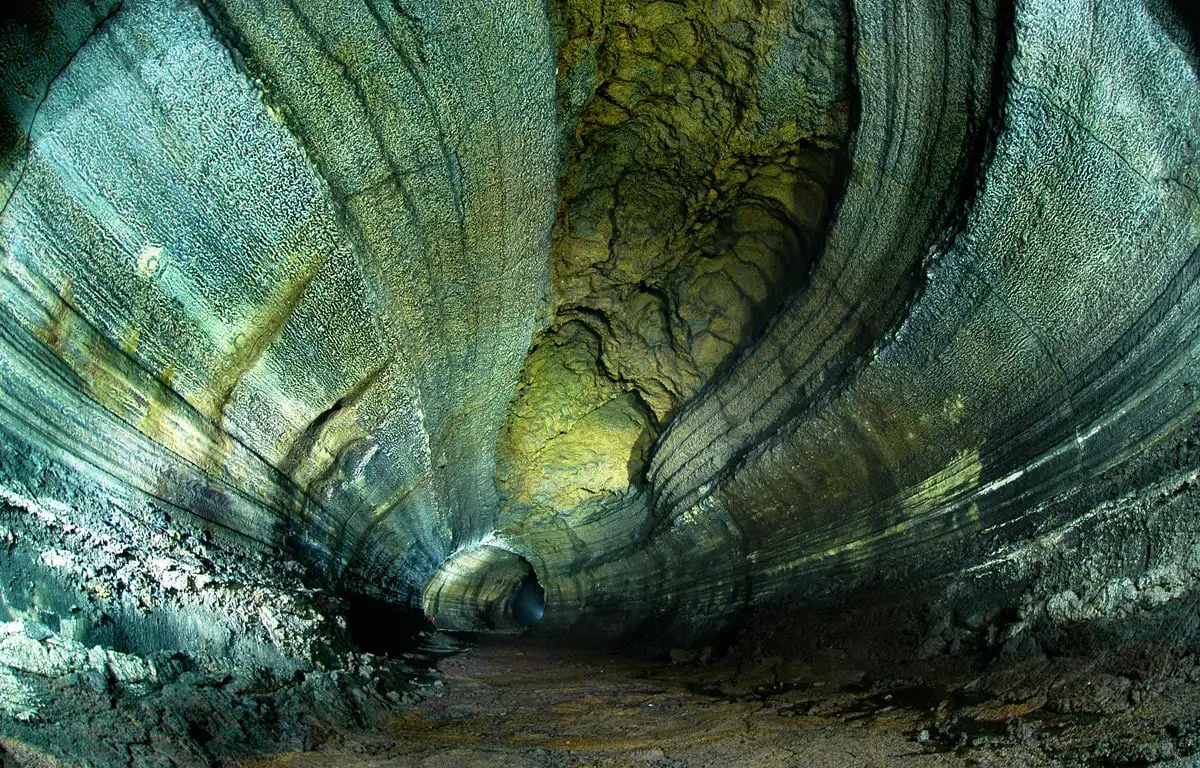
Caves
Every year there are reported exciting discoveries of new caves and discoveries of new qualities such as cave paintings in the ones known before. But there still is a feeling that our knowledge covers just a small part of all these monuments of nature.
Though, those which are known to us, offer a surprising diversity of unusual features and impressive sights.
 Recommended books
Recommended books
Significant Aspects of Rock Art Research in Central India
Signatures of Rock Art (in the form of paintings, engravings, etc.) drawn on rocks and rock shelter panels are one of the most authentic and direct evidence of the artistic mind of Early Man and his lifeways. This goes to suggest that Rock Art is a mixture of art, aesthetics, and philosophy. In unraveling mankind’s evolution from Homo erectus to Homo sapiens these early images offer vital clues.

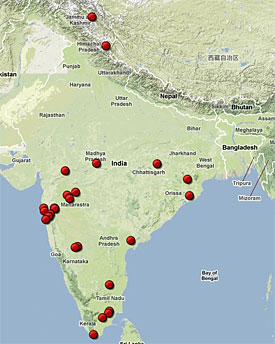


Impressive work. I must say that it is a good initiative for the growth of Indian archaeology.
Many thanks for your appreciation! India is land of wonders…